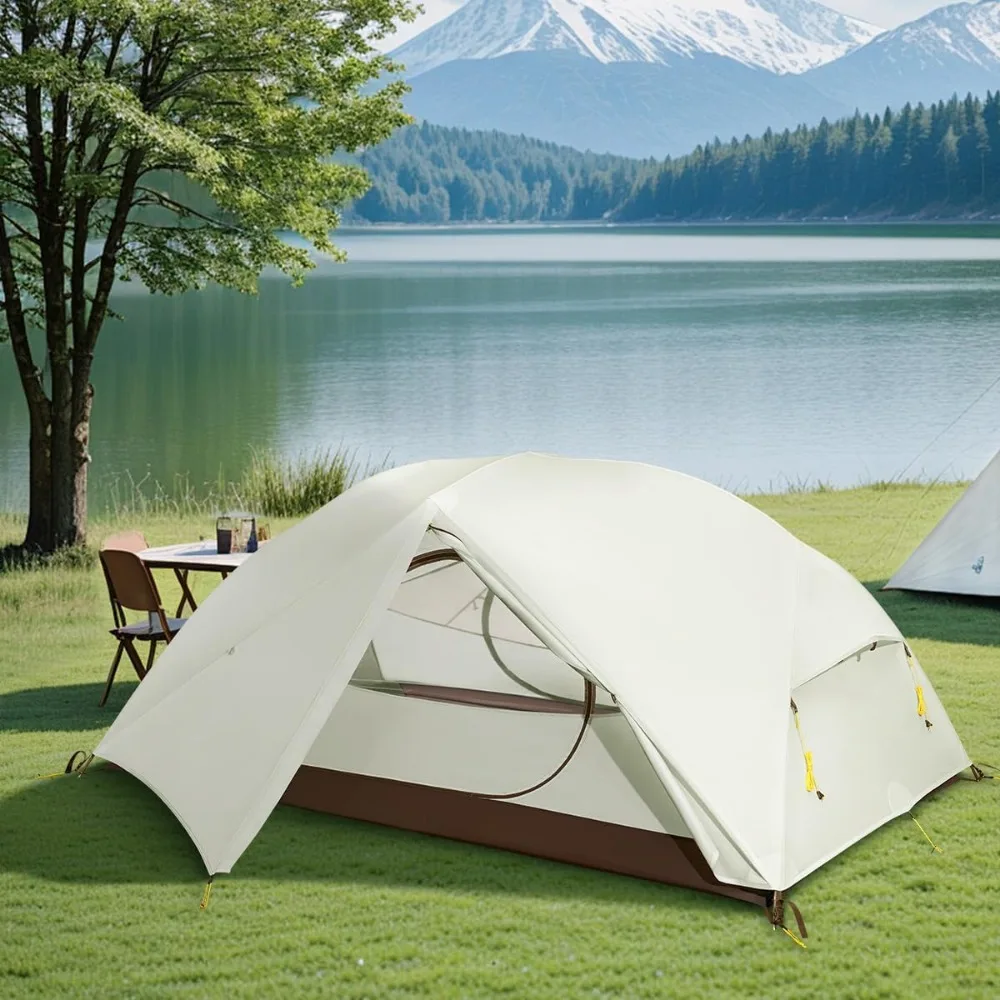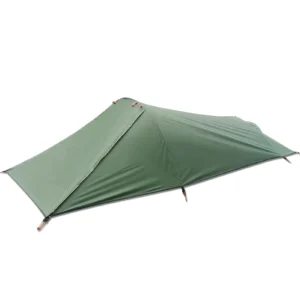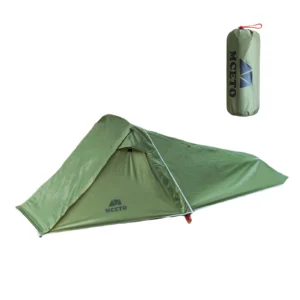Introduction to Lightweight Tents and Extended Hiking
The trail stretches endlessly before you, winding through mountains, forests, and valleys. Each step takes you further into the wilderness on your multi-day adventure. But with every mile, that heavy pack digs deeper into your shoulders, and the thought of setting up that bulky traditional tent at day’s end becomes increasingly daunting.
For long-distance hikers tackling iconic routes like the Appalachian Trail, Pacific Crest Trail, or Continental Divide Trail, every ounce matters. Carrying a conventional 6-pound tent over 500 miles is equivalent to shouldering an extra 40-50 pounds of cumulative weight—a burden that transforms the joy of hiking into an endurance test.
This is where lightweight tents emerge as game-changers for serious trekkers. As a critical component of reducing your base weight (the total weight of your gear excluding consumables), a lightweight shelter can dramatically transform your hiking experience. The shift from traditional camping shelters to ultralight alternatives represents one of the most significant improvements you can make to your gear strategy.
The benefits extend far beyond simply carrying less weight. From physical well-being to psychological comfort, from safety advantages to practical efficiencies, lightweight tents for long treks offer multi-faceted advantages that compound with each passing mile. Let’s explore how these remarkable shelters can revolutionize your extended hiking adventures.
The Scientific Impact: How Lightweight Tents Reduce Physical Strain
The human body isn’t designed to carry heavy loads for days on end. When you replace a conventional 6-7 pound tent with a 1-2 pound ultralight alternative, the biomechanical benefits are immediate and profound.
Research shows that each additional pound in your pack requires approximately 5-10 extra calories per hour of hiking. Over a 10-hour hiking day, that’s 50-100 calories per pound—energy that could be better spent enjoying the trail or covering additional miles.
The physical impacts of reduced weight include:
- Decreased pressure on knee and ankle joints, reducing inflammation and pain
- Less strain on back, shoulder, and hip muscles
- Improved posture while hiking, preventing long-term musculoskeletal issues
- Lower energy expenditure, resulting in less overall fatigue
- Reduced risk of repetitive stress injuries common to hikers
These benefits don’t merely add up over time—they multiply. By day three of your journey, when traditional backpackers start feeling the cumulative strain, lightweight hikers often still feel fresh and energized. By day seven, the difference becomes even more dramatic.
Understanding how heavy a hiking tent should be is crucial for preventing the most common hiking injuries. Medical professionals specializing in outdoor activities consistently recommend weight reduction as a primary strategy for injury prevention on long treks.
The science is clear: reducing your shelter weight creates a cascade of physical benefits that becomes increasingly valuable with each passing day on the trail. This investment in a lighter tent is ultimately an investment in your body’s long-term hiking capacity and why tent weight matters for long treks.
Covering More Ground: Enhanced Speed and Extended Range
The mathematics of lightweight hiking is compelling: less weight equals more miles with the same effort. This equation transforms not just how far you can go, but what adventures become possible.
Many experienced backpackers report a 20-30% increase in comfortable daily mileage after switching to lighter gear. This isn’t merely about speed—it’s about expanding your hiking horizons.
With a lightweight tent, previously intimidating routes become accessible. That ambitious 120-mile loop with significant elevation gain? The challenging section with limited water sources requiring longer carries? Both become more manageable when you’re not burdened by excessive gear weight.
The benefits extend to flexibility as well. Lightweight hikers often enjoy:
- The ability to take spontaneous side trips to viewpoints or attractions
- More comfortable “nero” days (nearly zero miles) and “zero” days (rest days) as you’re less bound by rigid schedules
- Greater capacity to push extra miles when needed to reach ideal campsites or water sources
- Enhanced ability to navigate technical terrain without feeling off-balance
- More energy reserves for unexpected challenges or weather events
Ultralight trekking tents for long-distance hikers transform what’s possible on extended journeys. Consider the difference between struggling to cover 10 miles daily with a heavy pack versus comfortably hiking 15 miles with a lighter load. Over a two-week trip, that’s an additional 70 miles of wilderness experienced—potentially an entire additional section of trail.
The freedom that comes with enhanced range isn’t just practical—it fundamentally changes how you experience the landscape around you.
Beyond Physical Relief: The Psychological Benefits of Going Lighter
The mental advantages of lightweight hiking are perhaps the most underappreciated aspects of gear reduction. When your body isn’t constantly signaling discomfort, your mind is free to engage more deeply with your surroundings.
Hikers often describe this phenomenon as increased “mental bandwidth.” Instead of focusing on shoulder pain, back soreness, or exhaustion, your attention can turn to the bird songs, changing landscapes, and the simple joy of movement.
This psychological shift manifests in several ways:
- Enhanced presence and mindfulness on the trail
- Greater appreciation for natural surroundings
- Reduced anxiety about physical limitations
- Improved mood and outlook, even during challenging conditions
- Better decision-making due to reduced physical stress
The mental clarity that comes with physical comfort also improves resilience during difficult stretches. When weather turns foul or terrain becomes challenging, hikers with lighter loads maintain better emotional reserves to handle adversity.
One long-distance hiker described the difference: “With my old gear, by afternoon I was just counting steps to camp. With my lightweight setup, I’m still noticing wildflowers at mile 18.”
Lightweight backpacking tents contribute significantly to this mental freedom. Knowing your shelter is easily managed and won’t be a burden creates confidence that permeates your entire hiking experience.
Safety Advantages: Improved Maneuverability on Challenging Terrain
Safety on the trail isn’t just about what emergency gear you carry—it’s about how well you can respond to changing conditions and navigate difficult terrain. Lightweight gear significantly enhances your ability to move safely through the wilderness.
With a lighter pack:
- Your center of gravity remains closer to your body
- Balance becomes more natural, especially on uneven surfaces
- Quick adjustments and reactions are easier when navigating obstacles
- Fatigue-induced mistakes become less common
- Emergency movements (like stepping quickly to avoid hazards) require less effort
These advantages become particularly valuable in specific challenging scenarios:
- Steep descents: Less weight pushing you forward means better control and reduced knee strain
- Boulder fields: Improved balance for navigating unstable surfaces
- Stream crossings: Enhanced stability against current with better balance
- Scrambling sections: More agility when three-point contact is needed
- Unexpected weather: Faster movement to reach shelter or safer terrain
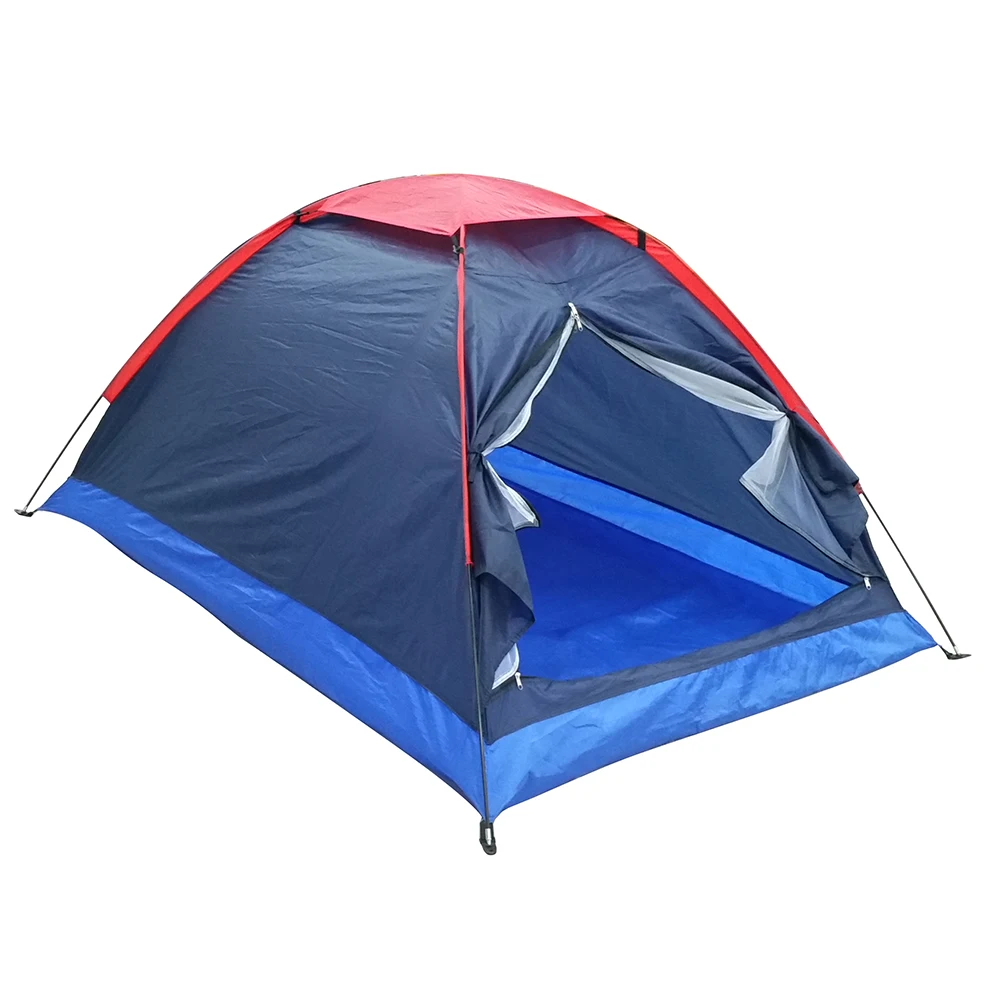
Wilderness safety professionals consistently emphasize that agility and good decision-making are key factors in preventing backcountry accidents. By reducing fatigue and improving physical capability, ultralight backpacking tents contribute directly to safer hiking experiences.
Additionally, in genuine emergency situations where rapid movement is essential—such as outrunning an approaching storm or helping an injured hiking partner—the difference between a heavy and light pack can be significant. The safety margin provided by improved mobility shouldn’t be underestimated.
Optimizing Your Pack: Space Efficiency and Organization
The advantages of lightweight tents extend beyond just weight reduction—their compact packed size transforms how you organize and use your backpack.
Traditional tents can consume 15-20% of internal pack volume, often requiring awkward attachment to the outside of your pack. In contrast, many lightweight shelters compress to the size of a water bottle, freeing up valuable internal space.
This volume efficiency creates cascading benefits:
- Better weight distribution for improved pack balance
- Option to use smaller, more comfortable packs
- Protection of gear inside your pack rather than external attachment
- Easier access to frequently needed items
- Ability to carry additional food for longer stretches between resupplies
- Space for comfort items that enhance your experience (like a small camp pillow)
The organizational advantages are practical and immediate. When your tent doesn’t dominate your pack, everything becomes more accessible and logically arranged. This means less time digging through your belongings to find essentials and more time enjoying the outdoors.
Compact backpacking tents also enable the use of smaller packs (45-55 liters instead of 65+ liters), which further reduces weight and improves mobility. This creates a positive feedback loop: less weight and bulk in your shelter allows a smaller pack, which itself weighs less and allows more efficient movement.
For many hikers, the space efficiency of lightweight tents proves just as valuable as their reduced weight, particularly on longer journeys where optimal packing becomes increasingly important.
Camp Efficiency: Faster Setup and Teardown Times
After a long day on the trail, the last thing you want is a complicated, time-consuming tent setup. Similarly, cold mornings become much more pleasant when breaking camp is quick and simple.
The design simplicity of lightweight tents translates directly to efficiency:
Traditional Tent Setup (6-7 steps):
1. Clear and prepare campsite
2. Unpack tent body
3. Assemble multiple pole sections
4. Attach poles to tent body
5. Stake out tent body
6. Attach rainfly
7. Stake and adjust rainfly
Lightweight Tent Setup (often just 3-4 steps):
1. Clear minimal area
2. Stake out footprint/corners
3. Insert trekking poles or quick-connect tent poles
4. Tension and adjust
This streamlined process typically reduces setup time from 10-15 minutes to 3-5 minutes—a significant difference when you’re tired, it’s getting dark, or weather is threatening. Trekking pole backpacking tents offer particularly fast setups since they use hiking poles you’re already carrying.
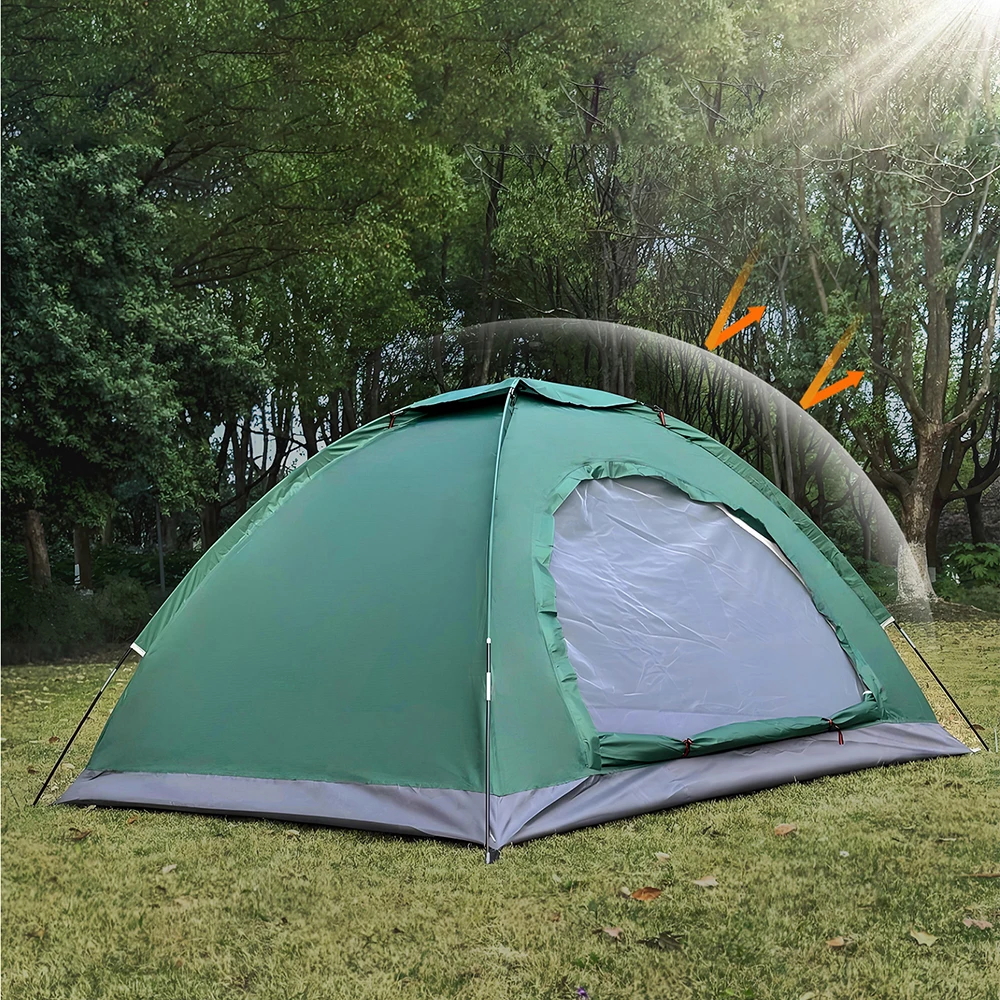
The efficiency advantages extend to:
- Faster response to sudden weather changes
- Less frustration during difficult conditions
- More time to enjoy camp activities or rest
- Earlier morning departures without rushing
- Simpler setup in challenging locations (dense forests, rocky areas)
For many hikers, this practical benefit becomes increasingly valuable as a trip progresses. By day ten of an extended trek, when fatigue accumulates, the ability to quickly establish or break camp becomes not just convenient but essential to maintaining morale and rhythm.
Lightweight Backpacking Tent, Ultralight Backpacking Tent, Ultralight Bivy Tent
Ultralight Single Person Camping Tent with Aluminum Poles for 3-Season Backpacking Waterproof DesignPrice range: $94.88 through $326.82 Select options This product has multiple variants. The options may be chosen on the product pageLightweight Backpacking Tent, Ultralight Backpacking Tent, Waterproof Backpacking Tent
$391.05 Select options This product has multiple variants. The options may be chosen on the product pageCompact Backpacking Tent, Lightweight Backpacking Tent, Waterproof Camping Tent
$335.52 Select options This product has multiple variants. The options may be chosen on the product pageUltralight Backpacking Tent, Ultralight Dome Tent, Winter Camping Tent
Price range: $369.63 through $370.07 Select options This product has multiple variants. The options may be chosen on the product pageBackpacking Tent with Vestibule, Freestanding Backpacking Tent, Lightweight Backpacking Tent
Price range: $446.89 through $447.22 Select options This product has multiple variants. The options may be chosen on the product pageBackpacking Tent with Vestibule, Trekking Pole Backpacking Tent, Waterproof Camping Tent
Price range: $271.99 through $519.52 Select options This product has multiple variants. The options may be chosen on the product page
The Ultralight System: How Tent Weight Affects Your Entire Gear Strategy
In the world of backpacking, experienced hikers often focus on the “Big Three”—shelter, backpack, and sleeping system—as these typically represent the heaviest components of your gear. The tent’s role in this system is central, as its weight and volume directly influence other equipment choices.
Understanding what makes a lightweight tent for trekking helps you build a cohesive gear strategy. When your tent weighs under 2 pounds instead of 5+ pounds, several system-wide optimizations become possible:
- Smaller, lighter backpack: A less bulky tent means you can use a 45-55L pack instead of a 65+L model
- Simplified sleeping system: The weight saved on your tent might allow a slightly more comfortable sleeping pad or bag
- Reduced overall base weight: Many hikers target a base weight below 15 pounds, which becomes much more achievable with a lightweight tent
- Balanced weight distribution: Lighter primary components mean less need to compromise on essential secondary items
The systemic approach to lightweight hiking considers how each item relates to others. For example, a lightweight freestanding tent might weigh slightly more than a trekking pole tent but eliminates the need for separate poles, creating system-wide savings.
Most successful lightweight backpackers follow a spreadsheet approach, tracking the weight of each item and analyzing the entire system rather than focusing on individual pieces. The tent typically represents the single largest weight-saving opportunity in this system.
Ultralight trekking pole tents exemplify this system thinking, as they serve dual purposes—shelter support and hiking assistance—eliminating the need to carry separate tent poles. This multi-functionality is a hallmark of effective lightweight gear strategy.
Addressing Concerns: Durability, Weather Protection, and Value
Despite the clear advantages, many hikers hesitate to adopt lightweight tents due to common concerns. Let’s address these directly:
Durability Concerns
Modern lightweight tents utilize advanced materials that offer impressive strength-to-weight ratios. While ultralight fabrics require more careful handling than heavy canvas, proper technique easily prevents damage:
- Q: Won’t thin fabrics tear easily?
- A: Today’s DCF (Dyneema Composite Fabric), silnylon, and silpoly materials offer remarkable durability when properly cared for. Most tears happen during careless packing or site selection, not from normal use.
Weather Protection Questions
Quality lightweight tents are engineered specifically for challenging conditions:
- Q: Can a lightweight tent handle serious storms?
A: Absolutely. Many ultralight shelters are used successfully on exposed alpine routes and in harsh weather. The key is proper pitching technique and appropriate site selection.
Q: Are lightweight tents as waterproof as heavier models?
- A: Modern lightweight trekking shelter materials like silnylon maintain excellent waterproofing (typically 1500mm+ hydrostatic head) while weighing significantly less than traditional fabrics.
Value Proposition
The higher price of lightweight tents often raises questions about value:
- Q: Why invest more in a lighter tent?
A: The value proposition extends beyond the tent itself to the entire hiking experience. Enhanced enjoyment over hundreds or thousands of trail miles makes the investment worthwhile for most dedicated hikers.
Q: How long will a lightweight tent last?
- A: With proper care, 3-5 years of regular use is reasonable for most quality lightweight tents—comparable to conventional tents used with similar frequency and conditions.
For most serious hikers, the initial concerns about lightweight shelters fade quickly after experiencing their comprehensive benefits on extended journeys.
Which Hikers Benefit Most? Ideal Use Cases for Lightweight Tents
While all backcountry travelers can appreciate reduced weight, certain hiking profiles gain particularly significant advantages from lightweight shelters:
Thru-Hikers
Those tackling end-to-end trails like the Appalachian Trail or Pacific Crest Trail benefit enormously from weight reduction over thousands of miles. The cumulative physical impact makes lightweight gear essential rather than optional.
Older Hikers
As we age, our joints become more sensitive to load bearing. Hikers in their 40s, 50s, and beyond often find that lightweight gear extends their hiking careers and maintains comfort on longer trips.
Peak Baggers
Those focusing on reaching multiple summits benefit from improved speed and reduced fatigue, allowing more efficient movement between objectives and greater daily range.
Photographers & Naturalists
Hikers carrying specialized equipment (cameras, field guides, binoculars) can offset this weight with lighter camping gear, maintaining reasonable total pack weight.
Weekend Warriors Seeking Comfort
Even those on shorter 2-3 day trips benefit from the reduced fatigue and improved hiking experience that lightweight gear provides. The advantages aren’t limited to extreme adventures.
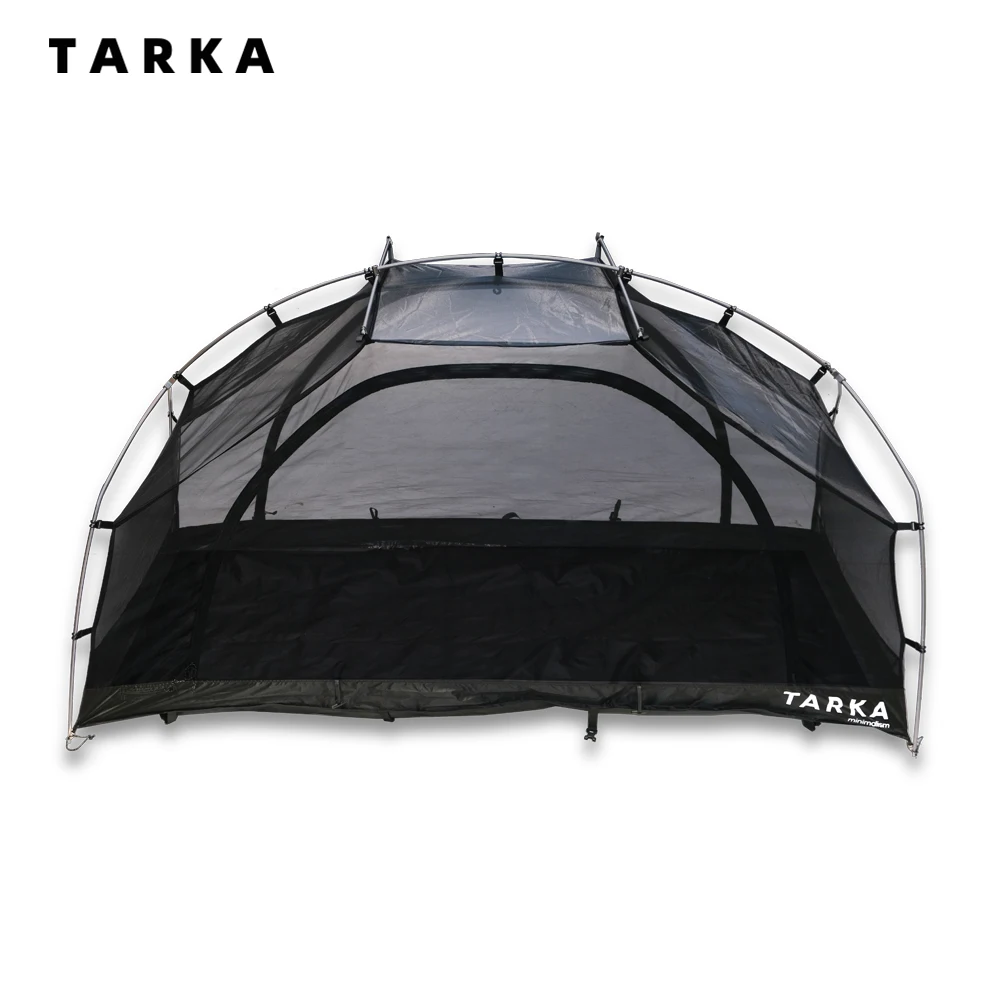
The universal theme across these profiles is enhanced enjoyment. Whether your priority is covering distance, maintaining comfort, or simply experiencing more with less fatigue, lightweight tents offer significant advantages.
Conclusion: Transforming Your Extended Hiking Experience
The shift to a lightweight tent represents more than a simple gear change—it’s a transformation in how you experience the trail. Every step becomes less laborious. Every mile feels more achievable. Every day ends with more energy to appreciate your surroundings.
The benefits compound dramatically over extended journeys: physical strain reduction prevents injuries and fatigue; improved maneuverability enhances safety; efficient packing and camp routines save time and frustration; and the psychological benefits maintain your enthusiasm throughout your adventure.
For those committed to multi-day wilderness exploration, a lightweight tent isn’t merely a luxury—it’s an essential tool that expands what’s possible. The question becomes not whether you can afford a lightweight shelter, but whether your hiking ambitions can afford to be limited by unnecessary weight.
As you plan your next extended trek, consider how a lightweight tent might transform your experience—not just by lightening your load, but by fundamentally changing your relationship with the trail and expanding your horizons of what’s possible in the backcountry.

